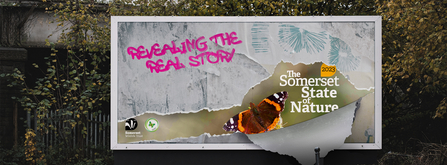Somerset Wildlife Trust is pleased to be able to launch the Somerset State of Nature Report 2023. The first of its kind for Somerset, and leading on from the national State of Nature Report released this year, the Somerset State of Nature Report 2023, is a comprehensive overview of the county’s landscapes and highlights, where data allows, trends in the abundance and distribution of species and quality of habitats, identifying the key pressures that wildlife is facing.
The report provides an important benchmark of how nature and wildlife is faring across the county, identifying both positive and negative trends, contextualising how global and national declines in biodiversity are also being felt in Somerset.
The report also features positive case studies which demonstrate key successes, and outlines planned approaches to restore Somerset’s natural environments in the face of known and emerging challenges, and to help meet the county’s 2030 environmental targets.

